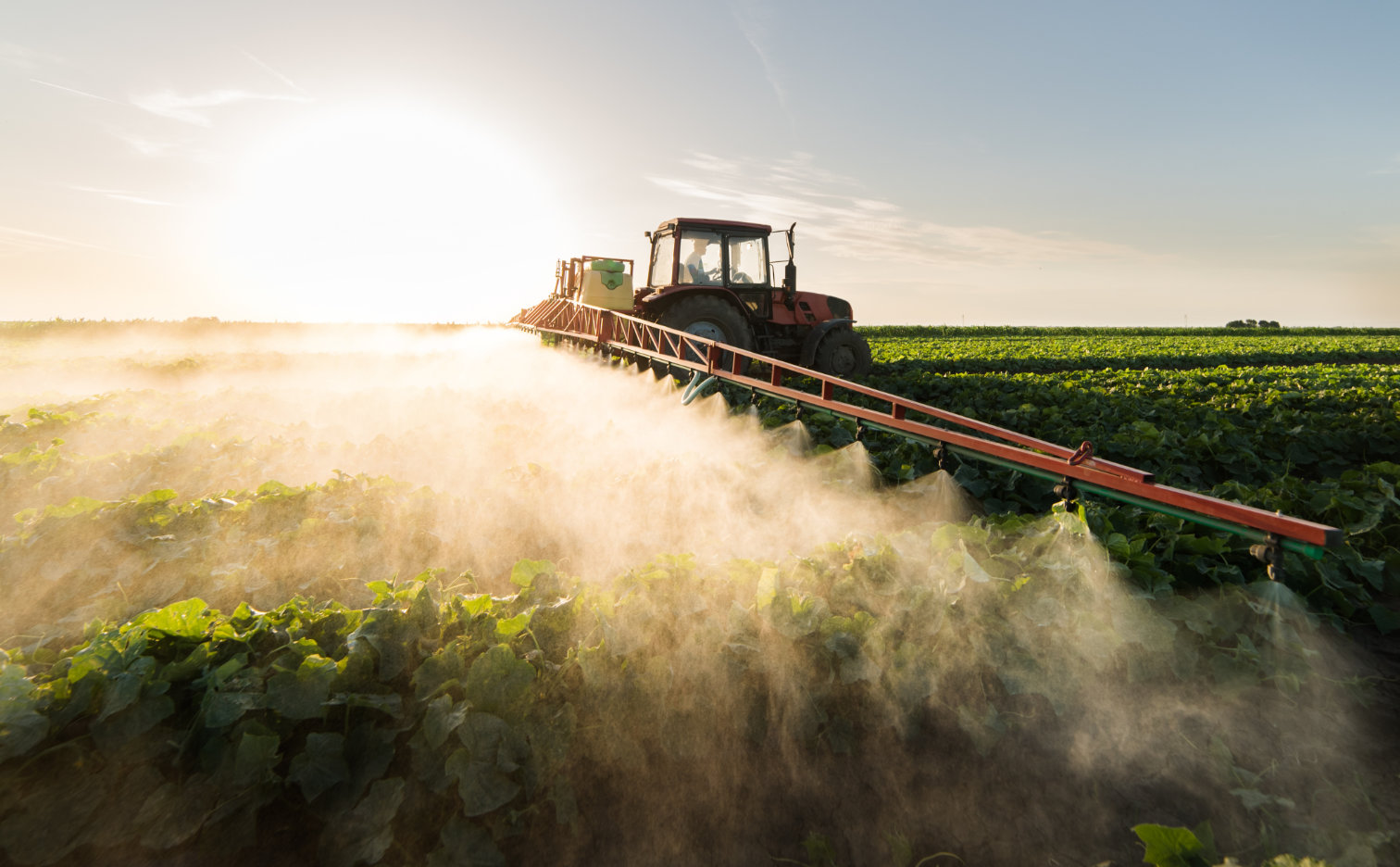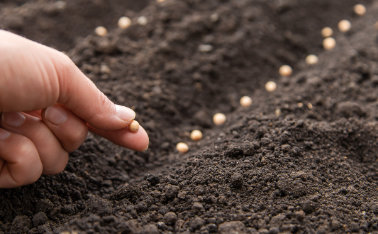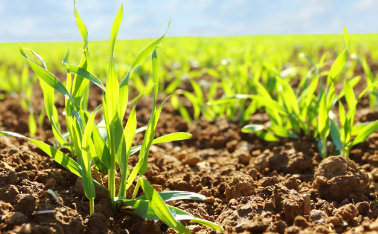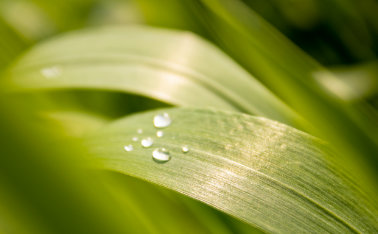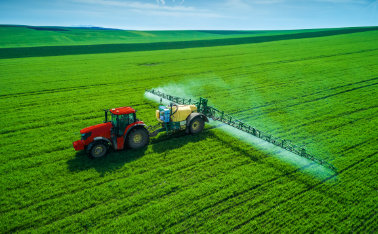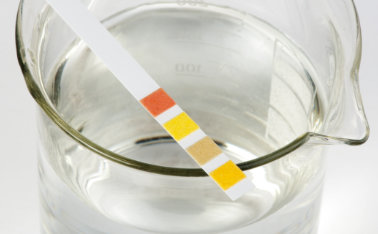DR GREEN foliar fertilizers – why are they worth using?
The intensification of production and the expectations of agricultural producers which is increasing every year, force more and more detailed knowledge of plants and satisfication of their needs in order to maximize the yield. One of the indispensable elements of today’s agricultural production is micronutrient fertilization.
Brief history of foliar fertilizers
Already at the turn of the 19th and 20th centuries, farmers of that time experimented with foliar nutrition of plants with simple sulfur compounds. However, their effectiveness was low. The breakthrough came in the 1930s and 1940s, when the EDTA compound was patented. Using it to chelate elements significantly increased the efficiency of fertilization. However, almost 100 years have passed since then and despite the continuous presence of EDTA fertilizers on the market, they can hardly be called innovative. Contrary to the rapidly developing concept of amino acid foliar fertilizers. Here, one of the precursors in our country and the leader in our market is DR GREEN. It is worth noting at the outset that it is a Polish company without foreign capital.
Foliar fertilizers – why is it worth it?
DR GREEN foliar fertilizers are distinguished by the MicroActive™ and MacroActive™ formulas that have a stimulating and anti-stress function. Fertilizers include amino acid compounds that intensify their action and support the processes of proper development of the root system in the initial stages of growth. They increase the use of nutrients in fertilizers and soil, moreover:
- activate many metabolic processes in plants,
- intesify flowering process,
- improve the biological value of the crop,
- increase plant resistance in stressful situations, such as drought, excess water, low temperatures,
- support the regeneration of damaged parts of plants,
- delivered to the soil, improve its microflora.
Another element proving the uniqueness and advancement of DR GREEN foliar fertilizers is the content of the pH stabilizer. The use of this solution enables the use of DR GREEN products not only with fungicides, but also with insecticides, without losing the effectiveness of the treatment.
Vegetable fertilizer (such as for corn, rapeseed) should provide the necessary micro and macro elements. Find out which of them are in fertilizers offered by DR GREEN.
Microelements in DR GREEN foliar fertilizers
The main element contained in DR GREEN foliar fertilizers are microelements, i.e. nutrients necessary for the cultivation and protection of plants – cereals, vegetables and fruits.
| DR GREEN micronutrient fertilizers | Boron (B) g/kg | Copper (Cu) g/kg | Iron (Fe) g/kg | Manganese (Mn) g/kg | Molybdenum (Mo) g/kg | Zinc (Zn) g/kg | Sodium (Na) g/kg |
| Cereals | 5 | 50 | 60 | 80 | 0,5 | 20 | 0 |
| Maize | 5 | 2 | 60 | 70 | 0,5 | 80 | 0 |
| Beet | 30 | 2 | 60 | 40 | 0,5 | 20 | 30 |
| Oleiste | 10 | 2 | 25 | 50 | 0,5 | 20 | 0 |
| Potatoes | 5 | 2 | 60 | 70 | 0,5 | 80 | 0 |
| Vegetables | 5 | 5 | 80 | 50 | 0,5 | 50 | 0 |
| Orchards | 5 | 5 | 80 | 50 | 0,5 | 50 | 0 |
As can be seen in the table above, DR GREEN foliar fertilizers are not individual micronutrients, but a set of all micronutrients necessary for plants; it can be adapted to the needs of soil, cereals and vegetables. A deficiency of only one of the elements can have a very negative impact on crops and yield. The combination of the necessary micronutrients in one product significantly facilitates effective foliar fertilization, eliminating the activities related to measuring and dosing individual nutrients. Thus, it also minimizes the possibility of making mistakes and saves valuable time when fertilizing crops.
The table below summarizes the individual elements (boron, copper, manganese, iron, zinc, molybdenum) and their importance for crops and deficiency symptoms.
| Nutrient | Importance | Deficiency symptom under water conditions |
| Boron (B) | • Supports the growth and development of generative organs • Responsible for cell division • Participates in the process of creating cell walls | • Dieback of growth cones • Deformation of young leaves • Inhibition of flowering |
| Copper (Cu) | • Protects the plant against root system diseases | • Poor plant vigor • Plant growth inhibition |
| Manganese (Mn) | • Intensifies the photosynthesis process • Necessary for the production of oxygen in the photosynthesis process • Increases plant frost resistance | • Plant growth inhibition • Interveinal chlorosis (characteristic white discoloration) • Stimulates the growth of the root system • Regulates the concentration of plant hormones (growth) and iron uptake, which affects the production of chlorophyll |
| Iron (Fe) | • Affects the correct color of plants • Takes part in the respiration process at the cellular level • Intensifies the process of CO2 extraction | • Chlorosis of young leaves covering the entire plant over time • Lowering CO2 uptake by plants • Stunting of young leaves |
| Zinc (Zn) | • Conditions nitrogen uptake • Activates enzymes • Participates in the metabolism of carbohydrates and protein synthesis. | • Plant dwarfism • Plant growth inhibition • Inhibition of tillering |
| Molybdenum (Mo) | • Warunkuje pobieranie azotu w postaci azotanów • Affects the growth of biomass | • Curling of the edges of leaves • Flowering inhibition |
Additional elements that enhance the effect of DR GREEN foliar fertilizers are directional cofactors, which support the delivery of microelements to places where the plant needs them. And so, for example, boron which is most needed in the root and flower, ends up right there.
Macroelements in DR GREEN foliar fertilizers
However, DR GREEN foliar fertilizers are not only micronutrients. The company’s offer also includes foliar macronutrient fertilizers.
| DR GREEN macronutrient fertilizers | Total nitrogen (N) g/kg | P2O5 g/kg | K2O g/kg | Total of macronutrients |
| DR GREEN START | 120 | 600 | – | 720 |
| DR GREEN ENERGY | 100 | – | 400 | 500 |
| DR GREEN QUALITY | – | 500 | 340 | 840 |
In this comparison, phosphorus deserves special attention, which, unlike in other products available on the market, is not obtained from minerals, but from organic compounds. This significantly increases its absorption and determines much faster and better action.
| Nutrient | Importance | Deficiency symptom under water conditions |
| Nitrogen(N) | • Component of proteins, nucleic acids and chlorophyll • Building material of biomass | • Growth inhibition • Stem fragmentation |
| Phosphorus (P) | • Plays a key role in the energy processes of cells • Responsible for the proper development of the root system | • Purple color of leaves • Root system growth stunted |
| Potassium (K) | • Participates in osmoregulation • Enzymes activator • Determines good nitrogen uptake • Responsible for the vigor of the plant | • Plant growth slowed or stopped • Chlorosis progressing to necrosis of leaf edges and tips • Leaf fall |
| Magnesium (Mg) | • Increases the content of chlorophyll | • Interneural chlorosis (yellowing) appearing on older leaves |
| Sulfur (S) | • Constitues a part of proteins • Conditions nitrogen uptake • Increases the plant’s immunity | • Plant dwarfism • Increasing the content of nitrates, which are poisonous to plants in high concentrations |
In practice, the decisive factors in choosing a foliar fertilizer are its composition, concentration and cost per pure ingredient. If you have any doubts as to which foliar fertilizer will be appropriate for your crops and their shortages, please contact us – we will advise you.
